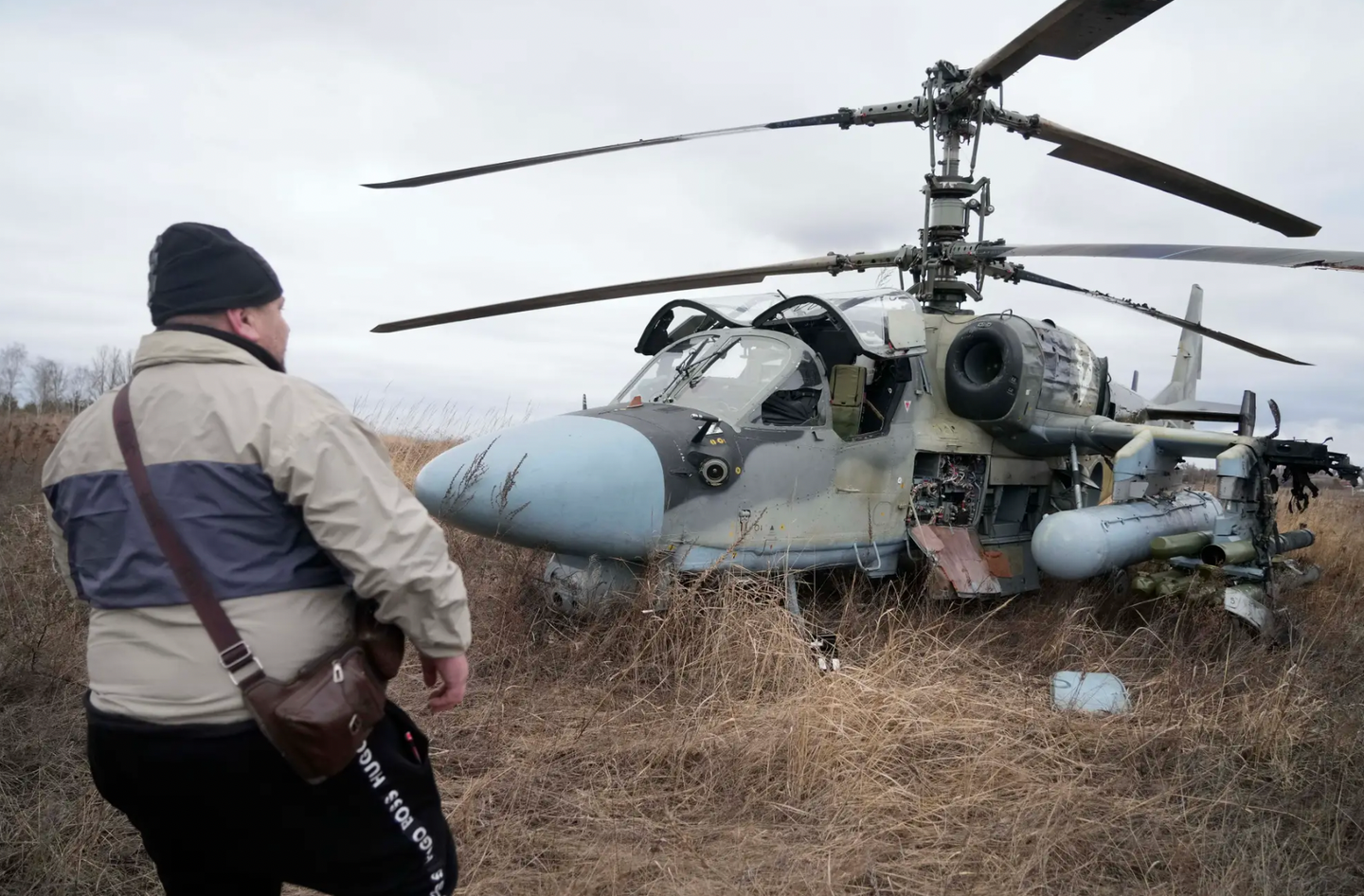Despite initial setbacks and heavy losses, Russian Ka-52 ‘Alligator’ attack helicopter has persistently demonstrated its capabilities throughout the ongoing conflict in Ukraine.
Russian Nukes In Belarus: What Are Putin’s ‘Real Goals’ Of Deploying Nuclear Weapons In Neighboring Belarus
Hero Of Ukraine: With Over 62 ‘Combat Kills’, Meet The Ukrainian Fighter Pilot That Still Inspires The Best Of The Best
From effectively thwarting Ukraine’s counter-offensive to showcasing exceptional survivability, this helicopter continues to prove its value on the modern battlefield.
On June 19, a video surfaced on social media showing a Ka-52 helicopter flying at a low altitude with its tail visibly torn apart and the remnants of the vertical fin hanging perilously.
Despite sustaining severe damage, a post-landing photograph showcased the twisted tail section of the helicopter, bent beyond 90 degrees, managing to remain intact.
The video, possibly captured from the cockpit of a nearby helicopter, lacks exact details regarding its location and time. However, the discernible presence of a section resembling the Black Sea coastline strongly indicates that the video was most likely recorded in southeastern Ukraine.
In addition to the heavily damaged tail, the video reveals multiple objects falling from the Ka-52 helicopter at the beginning. These objects, potentially discarded by the crew, could be either stores or other components of the tail assembly that detached during the flight.
The viral video opens with the Ka-52 helicopter dropping objects at a low altitude, likely to decrease its payload and enhance maneuverability. The escort helicopter then approaches Ka-52, revealing major damage to the helicopter’s tail assembly and cockpit section.
A Russian Ka-52 helicopter flying with a damaged tail. https://t.co/n3EImSNpFK pic.twitter.com/nUNlqMkS08
— Rob Lee (@RALee85) June 19, 2023
The exact reason for a Ka-52 helicopter being operational over Ukraine with severe damage to its tail assembly remains uncertain.
There have been claims surrounding the incident, suggesting that the crew’s choice to jettison external stores, particularly the fuel tanks, ultimately led to the damage inflicted on the tail of the Ka-52 helicopter.
According to these claims, one of the fuel tanks purportedly encountered an unfortunate trajectory, being thrown back into the slipstream and subsequently impacting the tail section.
While the video footage does not offer a definitive assessment, it is worth noting that four items can be observed being jettisoned, hinting at the possibility of drop tanks (commonly carried in pairs) and rocket pods being discarded during the sequence of events.

This, in turn, may indicate that the issue with the tail had occurred before the decision to jettison the stores.
Overall, there is a possibility that the Ka-52 helicopter may have been targeted by Ukrainian air defenses, resulting in damage to the airframe.
Even so, the damage inflicted on the helicopter was not substantial enough to cause it to crash or become inoperable.
Unique Design Of Ka-52 Attack Helicopter
Despite sustaining major damage, the chopper showcased in the video demonstrates remarkable resilience as it continues to fly and ultimately executes a safe landing.
This impressive feat has garnered praise from numerous military experts on the internet, who widely attribute the chopper’s exceptional survivability performance to its thoughtfully engineered design.
Several defense analysts have pointed out that the two-person crew of the helicopter has every reason to appreciate the special design of their aircraft. They noted that the damage sustained by the tail would have been highly detrimental to a conventional helicopter.
The severity of the damage inflicted on the tail assembly would typically have grave consequences in most helicopters, as the tail rotor plays a critical role in countering the torque generated by the main rotors.
In conventional helicopters, the loss of tail rotor functionality can result in the aircraft spinning in the opposite direction, leading to potential emergencies such as autorotation or, in the worst-case scenario, a crash or mid-air breakup.
The chances of recovery diminish significantly if the helicopter is flying at a lower altitude and slower speed when the tail rotor failure occurs.
Considering these factors, using a coaxial main rotor configuration featuring two sets of rotors turning in opposite directions proves to be highly advantageous for an attack helicopter, especially during low-altitude and slow-flight operations.
The Kamov design bureau, famed for its expertise in naval helicopter designs, has successfully incorporated coaxial main rotor configurations in its maritime fleet and the land-based Ka-50/52 series.
These helicopters offer remarkable survivability features, including a crew rescue system, which augment their operational effectiveness in challenging environments.
Although commonly referred to as having ejection seats, the Ka-52 helicopter is not equipped with conventional ejection seats. Instead, it utilizes a crew extraction system with a different mechanism for removing the crew from the cockpit.
In this system, explosive bolts are employed to jettison the main rotor blades, followed by the ejection of the cockpit canopy glass. Two rocket assemblies are launched from the cockpit, connected to the Zvezda/Tomilino K-37-800M seats by lanyards.
The seats are subsequently pulled out of the cockpit, and a parachute is deployed for a safe descent.
The crew extraction system in the Ka-52 helicopter is designed to operate effectively within a wide speed range, from stationary positions to speeds of up to 189 knots, and at various altitudes, including ground level.
Therefore, it can be reasonably concluded that if the crew had been flying a different helicopter model, their chances of safely returning to their base would have been significantly diminished.
- Contact the author at ashishmichel(at)gmail.com
- Follow EurAsian Times on Google News